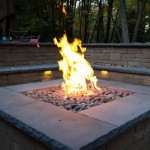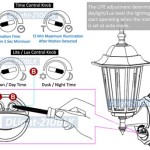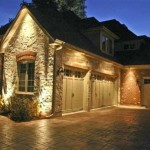How To Clean Mildew From Outdoor Wood Furniture
Outdoor wood furniture, while adding aesthetic appeal and functionality to patios and decks, is susceptible to mildew growth. Mildew, a type of fungus, thrives in damp, shaded environments and can appear as a gray or white powdery coating on wood surfaces. Early detection and appropriate cleaning methods are crucial to preventing long-term damage and maintaining the furniture's appearance and structural integrity. This article provides a comprehensive guide on how to effectively clean mildew from outdoor wood furniture.
The presence of mildew not only detracts from the furniture's visual appeal but can also contribute to wood decay if left untreated. Mildew feeds on organic matter, and the wood itself provides a food source. This can lead to weakening of the wood fibers, rot, and ultimately, the need for costly repairs or replacements. Furthermore, mildew can release spores into the air, potentially causing allergic reactions or respiratory problems for sensitive individuals. Therefore, regular cleaning and preventative measures are essential for preserving both the furniture and the health of its users.
Before initiating the cleaning process, it is important to identify the type of wood the furniture is made of. Different types of wood react differently to cleaning solutions. Softwoods, such as pine and cedar, are more porous and absorbent than hardwoods like teak and mahogany. This means they are more susceptible to damage from harsh chemicals and require gentler cleaning methods. Understanding the wood type will help in selecting the appropriate cleaning agents and techniques.
Appropriate safety precautions are also paramount. Mildew spores can be irritating to the skin and respiratory system. Wearing gloves, a mask, and eye protection will minimize exposure and prevent potential health issues. Ensure adequate ventilation in the cleaning area, preferably outdoors or in a well-ventilated garage. This will help to dissipate any airborne spores and chemical fumes.
Preparing for Mildew Removal
The initial step involves gathering the necessary cleaning supplies. A selection of the following items is generally required. A stiff-bristled brush, preferably with synthetic bristles, is used for scrubbing away the mildew. Avoid using wire brushes, as they can scratch the wood surface. A garden hose with a spray nozzle is needed for rinsing. Cleaning solutions, which will be discussed in detail later, are essential for killing the mildew. Furthermore, buckets for mixing solutions, gloves, a mask, eye protection, and a drop cloth to protect the surrounding area are necessary.
Before applying any cleaning solution, the furniture should be thoroughly brushed to remove loose debris and surface mildew. This can be done with a dry brush or a slightly damp brush. It is crucial to work in a well-ventilated area during this process to avoid inhaling the dislodged mildew spores. Ensure that all crevices and intricate details are thoroughly brushed.
After brushing, rinse the furniture with a garden hose to remove any remaining loose debris. The pressure of the water should be sufficient to wash away the dirt and mildew but not so strong as to damage the wood. Adjust the nozzle to a wide spray pattern to avoid concentrating the water pressure on a single point. Allow the furniture to air dry partially before applying the cleaning solution. This will help the solution penetrate the wood more effectively.
Choosing the Right Cleaning Solution
Several cleaning solutions can be used to remove mildew from outdoor wood furniture. The choice of solution depends on the severity of the mildew growth, the type of wood, and personal preferences. A mild solution, such as soap and water, is often sufficient for light mildew infestations. For more stubborn mildew, stronger solutions like bleach or vinegar may be necessary.
Soap and water is a gentle and effective option for cleaning light mildew. Mix a small amount of dish soap or laundry detergent with warm water in a bucket. Apply the solution to the furniture with a sponge or brush and scrub gently. Rinse thoroughly with water and allow to air dry. This method is suitable for most types of wood and is less likely to cause damage or discoloration.
A solution of bleach and water is a stronger option for removing stubborn mildew. Mix one part bleach with ten parts water in a bucket. It is crucial to wear gloves, a mask, and eye protection when working with bleach. Apply the solution to the furniture with a sponge or brush and scrub gently. Allow the solution to sit for 10-15 minutes before rinsing thoroughly with water. Bleach can be harsh on wood and may cause discoloration, so it is essential to test the solution on an inconspicuous area before applying it to the entire piece of furniture. Furthermore, bleach can be harmful to plants, so it is important to protect any surrounding vegetation.
Vinegar is a natural and effective alternative to bleach. White vinegar is a mild acid that can kill mildew without harming the environment. Mix equal parts white vinegar and water in a spray bottle. Spray the solution onto the furniture and let it sit for 30 minutes to an hour. Scrub the furniture with a brush and rinse thoroughly with water. Vinegar has a strong odor, but it will dissipate as the furniture dries.
Commercial mildew removers are also available. These products are specifically formulated to kill mildew and are often more effective than homemade solutions. When using commercial mildew removers, it is crucial to follow the manufacturer's instructions carefully. Test the product on an inconspicuous area before applying it to the entire piece of furniture. Wear appropriate safety gear, such as gloves, a mask, and eye protection.
Applying and Rinsing the Cleaning Solution
Once the cleaning solution has been selected, it is time to apply it to the furniture. Apply the solution liberally to the affected areas, ensuring that all mildew-covered surfaces are thoroughly saturated. Use a brush or sponge to work the solution into the wood, paying particular attention to crevices and intricate details. Allow the solution to sit for the recommended amount of time, typically 10-30 minutes, to allow it to kill the mildew.
After the solution has had time to work, scrub the furniture with a stiff-bristled brush to remove the dead mildew. Use a circular motion and apply moderate pressure to dislodge the mildew from the wood surface. Rinse the furniture thoroughly with water to remove any remaining cleaning solution and mildew residue. Ensure that all traces of the solution are removed, as any remaining residue can attract dirt and mildew in the future.
Allow the furniture to air dry completely before using it or applying any protective finishes. Drying time will vary depending on the weather conditions and the type of wood. To speed up the drying process, the furniture can be placed in a sunny location or wiped down with a clean cloth. Ensure that the furniture is completely dry before applying any sealants or stains, as moisture can trap mildew spores and lead to future growth.
In some cases, particularly with severe mildew infestations, multiple cleaning applications may be necessary. If mildew persists after the initial cleaning, repeat the process, using a stronger cleaning solution if necessary. It is important to be patient and persistent, as removing mildew can be a time-consuming process. However, with the right techniques and cleaning solutions, it is possible to effectively remove mildew from outdoor wood furniture and restore it to its original condition.
After cleaning and drying, consider applying a protective sealant or stain to the furniture. This will help to prevent future mildew growth and protect the wood from the elements. Choose a sealant or stain that is specifically designed for outdoor use and is compatible with the type of wood. Follow the manufacturer's instructions carefully when applying the sealant or stain. Regular maintenance, such as cleaning and reapplying sealant, will help to keep the furniture looking its best and prevent mildew from returning.
By following these steps, one can effectively clean mildew from outdoor wood furniture and maintain its beauty and longevity for years to come. Regular cleaning and preventive measures are key to protecting the furniture from mildew damage and ensuring a healthy and enjoyable outdoor living space.

How To Clean Teak Furniture

How To Clean Mould Off Your Wooden Garden Furniture Lazy Susan

Mitc S Interiors How To Clean Outdoor Teak Furniture

How To Remove Mold And Mildew From Patio Furniture Cushions Umbrellas

Remove Mold From Wood An Informative Guide
:quality(70)/arc-anglerfish-arc2-prod-tronc.s3.amazonaws.com/public/5VLX2QJ6NBBBFE4BZFASPT3DTI.jpg?strip=all)
How To Clean An Outdoor Teak Table

How To Remove Stubborn Mould From Wooden Furniture Premium Door Stripping

Easy Ways To Re Worn Outdoor Furniture And Decor Thrifty Diy Organizing

Outdoor Furniture Avoid Sitting On Organic Growth Wet Forget Blog

Cleaning Outdoor Furniture Mildew Removal Tips By Type Lovetoknow
Related Posts







